We were in Chicago recently (late April-early May) during the change of seasons; several warm sunny days, ideal for walking and exploring, one day of wet snow and another of spring rain; the snow took everyone by surprise, confirming Chicago’s bi-polar weather, and another example of climate change – snow in late April. Nonetheless, they were good days for walking in the city and exploring exhibitions. And now, as of this posting, spring is in full bloom and people are out and about. This post is the first of three in which I’ll share thoughts on some of the art we encountered.
On one of our walks we went to Millennium Park to see Anish Kapoor’s Cloud Gate and Frank Gehry’s band shell in brilliant sunlight, and approached the Art Institute via the footbridge that takes you to the courtyard terrace and restaurant on the top floor of the modern wing, designed by Renzo Piano some ten years ago. This is a convenient – and beautiful – way to approach the exhibitions in this roof top space as they are free and open to the public, not in with the part of the museum that requires tickets. The sculpture by Hans Haacke, Gift Horse is sited perfectly on the terrace with the skyline as a backdrop, amplifying the concept and content of this art work. Gift Horse was originally commissioned for the city of London, to be temporarily placed on the empty plinth in Trafalgar Square. For this monumental bronze sculpture, Haacke drew inspiration from a George Stubbs engraving of a horse skeleton. From a distance, the bow around the horse’s leg looks like gift-wrapping or tying up a break – a closer view reveals that it is pulsing with a live LED readout of the stock market. This work continues the artist’s investigation and critique of systems of art, power, and wealth.
Meanwhile, inside the museum there were several exhibitions of note. First on our list was a show that was soon to close (May 6th) and that we didn’t want to miss, because of our interest in printmaking, the evolution and development of visual language, and art created by women. The exhibition Into The Void: Prints of Lee Bontecou presented state proofs and variations that the artist created while resolving the images to be editioned. In her prints Bontecou explored the same themes as in her more well-known wall reliefs, such as tensions in our lives between the rounded and organic vs. the sharpened and man-made, and, of course, what they represent.
Another temporary exhibition, Connoisseurship of Japanese Prints, also explores the variation and different states unique to printmaking. Among many beautiful examples, this special exhibition features three versions of the well-known Great Wave from Hokusai’s series Thirty-six Views of Mount Fuji. On through June 23rd.
Closing on June 9th is another special exhibition of four portraits by Rembrandt. As stated by the Art Institute: “Taken together these four paintings show Rembrandt’s brilliant skill as a painter, especially as a painter of people, as well as his deep knowledge of historical subjects and art history. His use of artifice and costumes not only celebrates a historical genre but also anticipates a future in which identity is something created by the artist, and humanity is expressed by everyday people.”
- Gift Horse, 2014
- Gift Horse, 2014
- Gift Horse, 2014
- Gift Horse, 2014
- Gift Horse, 2014
- Gift Horse, 2014



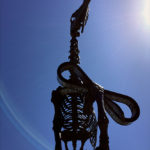
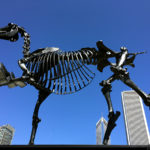
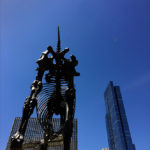
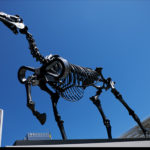
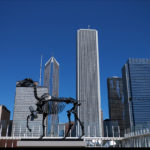
I love Bontecou’s work. Just saw a vaccuum molded fish of hers at LACMA today. Gift horse looks great.